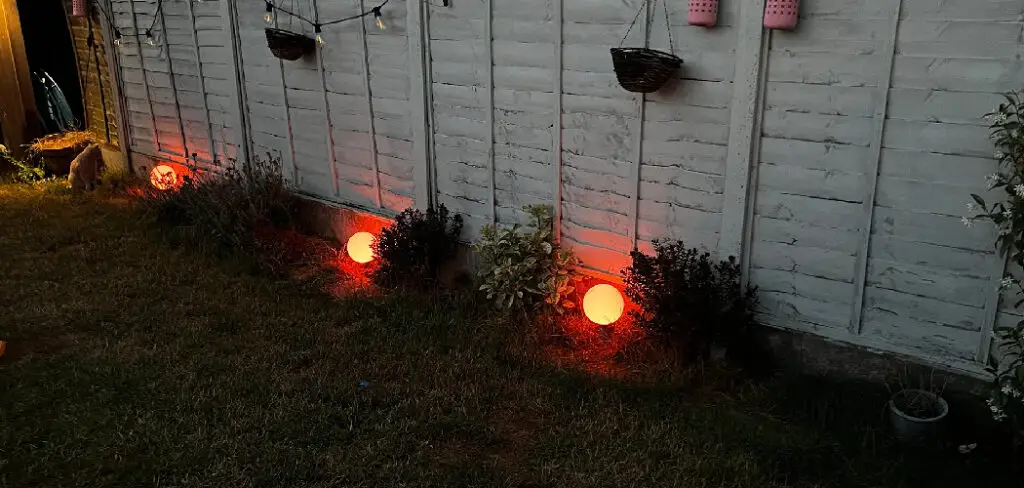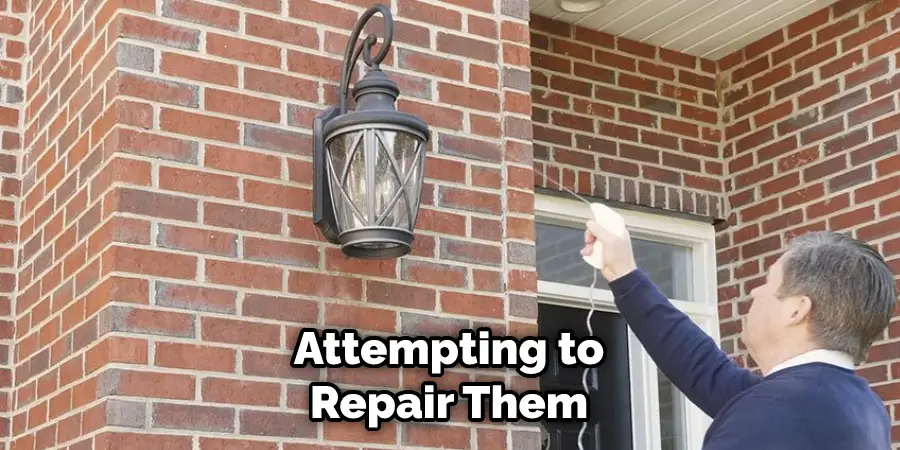

Outdoor lights turning on unexpectedly can be a frustrating and sometimes costly problem. This article delves into the common causes behind this issue, focusing on faulty sensors and troubleshooting steps. We’ll explore how to diagnose the root cause and rectify these problems, from simple adjustments to more in-depth electrical repairs. Get a handle on your outdoor lighting system and prevent unnecessary energy use. This guide will provide you with clear explanations and practical steps, guiding you through the process of identifying the problem and restoring proper functioning. This comprehensive article will explore several possible causes, from faulty sensors to incorrect wiring, providing detailed steps to resolve each issue. The sections below are structured to help you easily navigate the troubleshooting process.
Faulty Sensors: The Primary Culprit
Understanding Motion Sensors
Motion sensors are the workhorses of many automatic outdoor lighting systems. These devices detect movement and trigger the lights. However, sometimes they malfunction, leading to unexpected activation. Faulty sensors, often due to interference, can initiate the lights even when there’s no movement. This is one of the most common reasons outdoor lights turn on unexpectedly. Poor installation can also contribute to the problem. Imagine a sensor positioned near a frequently moving object—a tree swaying in the wind or a passing vehicle—triggering the lights unnecessarily.
Troubleshooting Faulty Motion Sensors
First, ensure the sensor is properly positioned. Avoid placing the sensor in areas with excessive light interference—for instance, near brightly lit areas or high-traffic roads. Check for any physical damage or obstructions that might be interfering with the sensor’s proper functioning. Also, investigate the sensor’s battery life or power source. If it’s low, consider replacing the battery or ensuring the correct connection to the power source. If you are sure the sensor is working, check if there is a loose wire or a malfunctioning component in the circuit. Consider replacing the sensor entirely if troubleshooting does not work. This ensures the most effective results in correcting the problem. Consult the manufacturer’s instructions for specific guidelines.
Electrical Issues: Common Problems and Solutions
Related Post : Switches Not Responding Properly? Common Wiring Problems to Check
Wiring Problems
Electrical issues are another common reason for outdoor lights unexpectedly turning on. A loose or corroded wire in the wiring system can cause a short circuit or other electrical problems that trigger the lights. Furthermore, faulty connections can lead to unintended activation. Inadequate electrical grounding can also be a contributing factor. Incorrectly grounded systems or inadequate safety measures can lead to unpredictable electrical activity, potentially causing lights to turn on unexpectedly.
Electrical Troubleshooting
To fix this, check the wiring thoroughly for any loose or damaged connections. Tighten loose wires and replace any damaged insulation, keeping in mind safety precautions and electrical codes. Inspect wiring for corrosion and take care to address it immediately. Make sure all connections are secure and properly grounded. Look at the entire circuit—not just the problem area. Consult an electrician if you’re uncomfortable working with electrical wiring.
Incorrect Settings: Misconfigured Systems
Timer Malfunctions
Timer malfunctions can be a surprisingly frequent cause. Many outdoor lighting systems use timers to control the lights’ activation based on the time of day or other conditions. Inaccurate or faulty settings can lead to the lights turning on at unexpected times. Misconfigured timers can activate the lights when they should be off or even cause the lights to stay on longer than programmed. Make sure to verify and adjust the settings to ensure they are correct for your intended use.
Adjusting Timer Settings
Carefully check the timer settings to ensure they align with your desired schedule and lighting needs. Use the manufacturer’s instructions as a guide and adjust the settings accordingly. Verify the time accuracy. Verify the sensor settings are synchronized correctly with the timer—this will avoid any errors or unexpected activation.
Interference and External Factors: Hidden Triggers
Radio Frequency Interference
Radio frequency interference (RFI) can sometimes cause outdoor lights to turn on unexpectedly. Nearby electronic devices or appliances emitting radio frequencies can interfere with the sensor’s function. This interference is often undetected and causes issues that are hard to track down. Incorrectly installed wiring near radio sources can also contribute to the problem.
Minimizing Interference
To minimize interference, locate potential radio frequency sources and adjust the wiring if necessary. Use shielded wiring to avoid interference problems, ensuring the wiring is well-maintained and protected. Consider moving any wireless devices or appliances that might be emitting strong radio frequencies to a different location.
Maintenance and Regular Checks: Proactive Solutions
Light Fixture Problems
Light fixtures themselves can also be sources of the problem. Malfunctioning light fixtures or loose connections within the fixtures can result in unexpected activation. Problems like faulty bulbs or internal wiring issues can initiate the lights unnecessarily. A comprehensive inspection of the entire lighting system is critical.
Comprehensive Inspections
Schedule regular inspections of your outdoor lighting system. Look for any obvious signs of damage or wear to the light fixtures, wiring, or connectors. Consult an expert for regular maintenance if you are unfamiliar with electrical work, or if you are unsure of your ability to perform these maintenance checks safely.
Other Potential Culprits and Advanced Troubleshooting
Other External Factors
Environmental factors like strong winds, nearby trees, or construction activity can also impact the sensor’s operation. Sometimes, the sensor itself might be positioned in an area where these environmental factors lead to unintended activation. Additionally, consider animal activity as another possible cause; small critters could sometimes be interfering with sensor accuracy.
Additional Troubleshooting
In more complex scenarios, seek professional help from a certified electrician. They can assess the system as a whole to determine the cause of the problem, if issues are difficult to isolate. An electrician may recommend upgrades to the lighting system to prevent recurring problems.
Replacing or Upgrading Your System
Modernizing Your Lights
Consider replacing your outdoor lighting system with more advanced technology. Smart lighting systems can often help solve many of the common issues associated with older systems. These systems usually incorporate more advanced sensing technologies and can offer better control and reliability. These systems often have automated features and controls for enhanced reliability.
Professional Installation
Professional installation of a new outdoor lighting system can significantly increase the reliability and safety of your system. Always ensure that the installation is performed by a qualified and licensed electrician who adheres to all safety and installation standards.
Additional Considerations
Safety Precautions
Working with electrical systems requires strict safety precautions. Always disconnect the power source before starting any troubleshooting or repair work. Ensure you have the necessary safety equipment, such as gloves and safety glasses. Consult a qualified electrician for more in-depth work when needed. Electrical issues are best handled by experienced professionals.
Long-Term Solutions
Consider preventative measures like ensuring the correct placement of lights and sensors. This should improve longevity and reduce future issues.
Understanding the Role of Electrical Grounding
Ensuring Proper Grounding
Proper electrical grounding is essential for preventing electrical surges and ensuring the safety of your outdoor lighting system. Ensure all wiring and components are properly grounded. Grounding is key in avoiding short circuits and potential hazards.
Testing Grounding
Regularly test the grounding to confirm it’s functioning properly. Having a safe and properly grounded electrical system minimizes risk.
In conclusion, understanding the causes of unexpectedly turning outdoor lights on and troubleshooting the corresponding sensors is crucial for maintaining efficiency and preventing energy waste. By addressing potential issues like faulty sensors, incorrect wiring, or interference, homeowners can enjoy the convenience and safety of properly functioning outdoor lighting systems. For further assistance or to explore advanced lighting solutions, reach out to qualified electricians or lighting professionals. Don’t let unexpected light issues disrupt your enjoyment of the outdoors! Take control and fix them today!